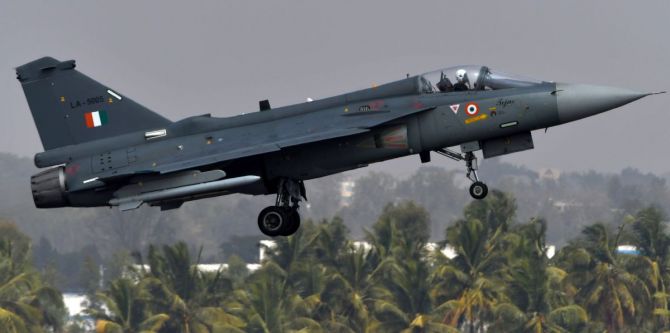Atmanirbhar Bharat reduced Arms Imports By 33% between 2011 – 15 to 2015 – 20

India’s arms imports fell 33 % between 2011-15 and 2015-20, said a report released by the Stockholm International Peace Research Institute (SIPRI) on Monday, at a time the country has taken a raft of measures to cut dependence on imported military hardware.
The report on international arms transfers attributed the drop in India’s arms imports mainly to an attempt to reduce its dependence on foreign arms be it American, European or Russian. It has also tried to simplify the complex procurement processes.
Though Russia was the most affected supplier because it supplied the maximum, Even India’s imports of US arms also fell by 46% as per the report. India has also diversified its essential arms imports in the coming years from several suppliers.
India’s top three arms suppliers during 2016-20 were Russia (accounting for 49% of India’s imports), France (18%) and Israel (13%), the report said. Only the balance 29% has been from USA and few other countries.
According to SIPRI, India has also accounted for 0.2% of the share of global arms exports during 2016-20, making the country the world’s 24th largest exporter of major arms. This represents an increase of 228% over India’s export share of 0.1 % during the previous five-year period of 2011-15. Myanmar, Sri Lanka and Mauritius were the top recipients of Indian military hardware.
The latest import data is a clear indicator that the country’s drive towards Atmanirbharta is showing results, said Air Marshal Anil Chopra (Retd), director general, Centre for Air Power Studies. “India is finally at an inflection point and the Indian defence industry is coming of age,” he said.
Arms exports by Russia, which accounted for 20% of World exports of major arms in 2016–20, dropped by 22%, the report said. “The bulk — around 90% — of this decrease was attributable to a 53% fall in its arms exports to India,” SIPRI said. India was the biggest importer of Russian military hardware during the last five years, accounting for 23% of Russia’s total exports.
It also said that exports by China, the world’s fifth largest arms exporter in 2016-20, fell 7.8% between 2011-15 and 2016-20. China accounted for 74% of Pakistan’s military imports during the last five years, up from 61% in 2011-15. “Pakistan is now firmly in China’s hold for its arms requirements,” Chopra said.
But the United States, the world’s largest arms exporter, saw its exports rise. Its global share of exports went up from 32% to 37% between 2011-15 and 2016-20.
The five largest arms exporters in 2016-20 were the US, Russia, France, Germany and China, while the top importers were Saudi Arabia, India, Egypt, Australia and China.
India has set aside ₹70,221 crore – 63% of the military’s capital budget for 2021-22 for buying locally produced weapons and systems to boost defence indigenisation.
The allocation for indigenous procurement — made for the second consecutive year — will power the purchase of TEJAS MK-1A jets, light combat helicopters (LCHs), basic trainer aircraft, Arjun MK-1A tanks, Astra beyond-visual-range missiles, Pinaka rocket systems and anti-tank missiles, as previously reported by Hindustan Times.
The budget will be used for making milestone payments for several domestic acquisitions through the year. Such payments refer to a certain percentage of the total deal amount that has to be paid at different stages of the execution of a contract.
Last year, the ministry spent over ₹51,000 crore, or 58% of the capital budget, on domestic purchases.
The ₹48,000-crore contract for 83 TEJAS MK-1A jets, awarded to Hindustan Aeronautics Limited last month, is the biggest indigenous defence procurement deal so far.
Basic trainers and LCHs figure on the government’s negative import list that seeks to ban the import of 101 different types of weapons, systems and ammunition over the next five years. This year, the government is likely to notify a second list of weapons, systems and ammunition that cannot be imported.
India will sign a $2.5-billion contract this year for buying 56 medium transport aircraft for IAF to replace its fleet of ageing Avro-748 planes.
Airbus Defence and Space and Tata Advanced Systems Limited will jointly execute the project to equip the air force with 56 C-295 transport aircraft under the Make-in-India initiative in the aerospace sector.
India’s military imports are likely to grow over the next five years but it will be only for most essential items. Even out of this maximum will be through MAKE IN INDIA. As India perceives increasing threats from Pakistan and China and as its ambitious plans to produce its own major arms will take time to meet the required numbers, it is planning programmes for arms imports. However deliveries of indigenous combat aircraft, air defence systems, ships and submarines, are expected to increase over the coming five years.
It is a clear indicator that the country’s drive towards Atmanirbharta is showing results, said Air Marshal Anil Chopra (Retd), director general, Centre for Air Power Studies. “India is finally at an inflection point and the Indian defence industry is coming of age,” he said.




